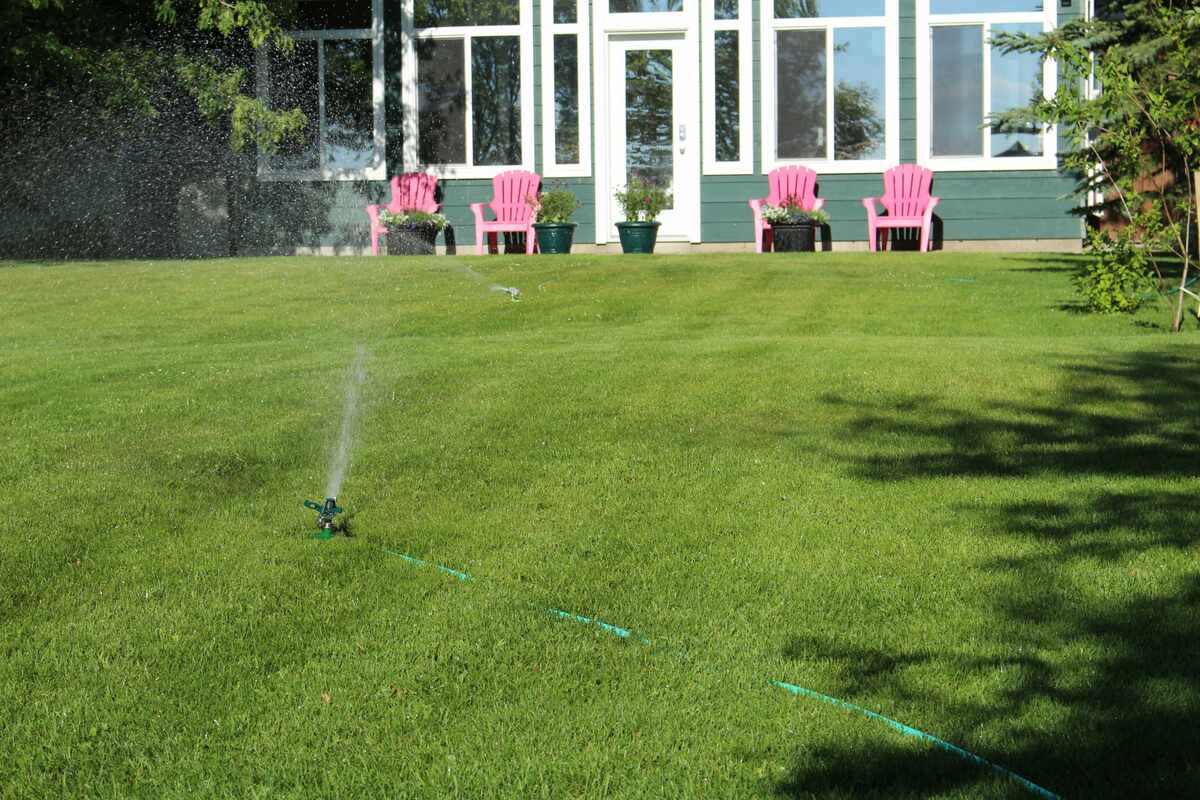
In the summer, lawns can take quite a beating from scorching heat and intense sunlight, leaving them dehydrated and sparse. If natural precipitation isn’t on your side, developing a proper lawn watering schedule may be your saving grace. So, when is the best time to water your lawn in hot weather?
The answer depends on multiple factors, including your local climate, soil type, grass type, and humidity levels. Our tips and tricks can help you keep your lawn looking great, even in the sweltering heat.
Why Timing Lawn Watering is Important
When it comes to watering your grass, timing is everything. Knowing how long, how often, and how much to water your grass is critical. It can mean the difference between a drab and fab lawn and significantly impact the health of your turf.
Timing your watering sessions correctly also helps you use water efficiently, contribute to water conservation, prevent diseases and pests, and keep your grass as stress-free as possible.
The Best Time to Water Your Lawn in Hot Weather
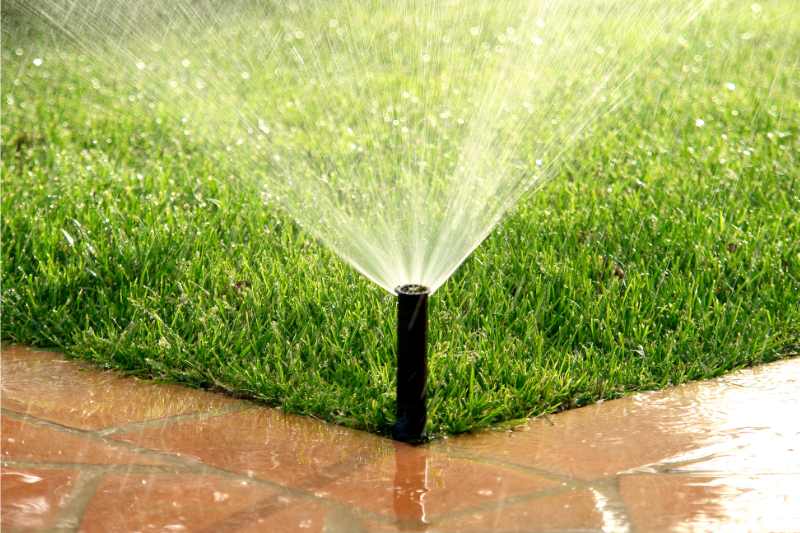
The best time of day to water your grass in hot weather is between 5 a.m. and 9 a.m. when wind and evaporation are less likely, and the sun is just starting to rise. Early morning irrigation allows the water to penetrate the soil and reach the roots. It also gives the water left on the foliage time to dry, which reduces the risk of fungal lawn diseases.
Another option is to water your grass around 6 p.m. However, this is risky because without the sun to dry the water on your grass blades, your lawn can become an easy target for diseases and pests. To mitigate the risks, use a drip irrigation system. It targets the grassroots directly without touching the foliage.
Pro tip: Don’t irrigate between 10 a.m. and about 4 p.m., as most of the water will evaporate instantly without benefiting your lawn.
How Often to Water Your Lawn in Hot Weather
Grass needs between 1 inch and 1 ½ inches of water per week (either from irrigation or precipitation).
If there is no rain, water your grass two to three times, each for approximately 30 minutes. In extremely hot weather, consider giving your grass a solid 2 inches of water weekly.
Grasses in drought-prone areas may even need watering twice a day, but this varies from situation to situation. Water your lawn until it looks fresh again and bounces back when you step on it. In case of rainfall, you can stop altogether and start back up in a few days as needed.
Water your lawn less often but for longer periods. This method encourages the grassroots to search for moisture, resulting in a robust, well-developed root system. Watering frequently for short periods contributes to a shallow and weak root system that can’t withstand drought.
Turn your sprinkler system on and soak your lawn until puddles form during each 30-minute session. Every time you water your lawn, the soil should be dry and ready for another nice, long drink.
What to Consider When Watering Your Lawn in Hot Weather
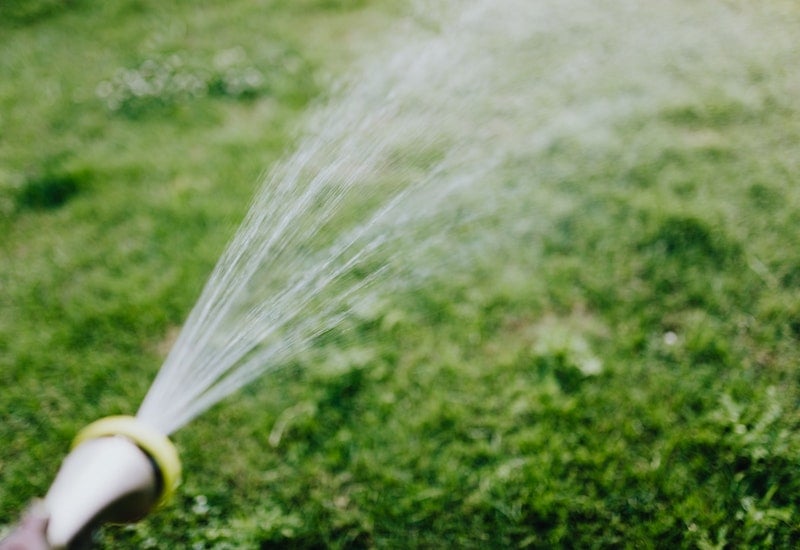
If you’re experiencing scorching temperatures in your area, you may have to alter your watering routine. These factors typically influence how you water your grass during the hot months of the year:
Your Soil Type
Soil types fall into four categories: loam, clay, sand, and silt. Each retains and drains water differently, which can affect the condition of your lawn in hot weather.
Clay soils are known to hold water well – almost too well. Typically, this contributes to pooling, runoff, root rot, and fungal diseases. However, when it’s blazing hot, and the water seems to disappear in the blink of an eye, clay’s ability to hold onto moisture becomes useful. It also means clay soil won’t require as much water as other soil types.
Water your clay soil for about 15 minutes each time until it has 1 to 1.5 inches in a week.
Sandy soils are the opposite of clay soils in that they absorb water well but drain very quickly, which can be a disadvantage in hot weather. Give sandy soil ⅓ inch of water three times a week and allow the water to reach deep into the soil. If needed, increase the frequency, but always water the soil deep to maintain its health.
Silty soils are prone to erosion, so do your best not to overwater (which may be tempting if the weather is too hot). They drain better than clay soils but less quickly than sandy soils, which means you can count on a relatively stable water supply for your grass.
Water silty soils twice a week with ½ inch of water each time and adapt to the weather conditions in your area.
Loamy soil combines sand’s drainage qualities and clay’s water retention qualities, providing the proper balance for your grass. Lawns with loamy soil need about ½ inch of water twice a week to stay resilient throughout the hot months.
If you don’t know your soil type, you can test your soil and send the samples to your local Extension Office for identification and amendment suggestions.
Pro tip: To determine your soil’s moisture levels, press the tip of a screwdriver into your soil. It should easily penetrate the surface to a depth of 6 to 8 inches. If it doesn’t, the soil is dry, and it’s time to adjust your watering schedule accordingly.
Your Grass Type
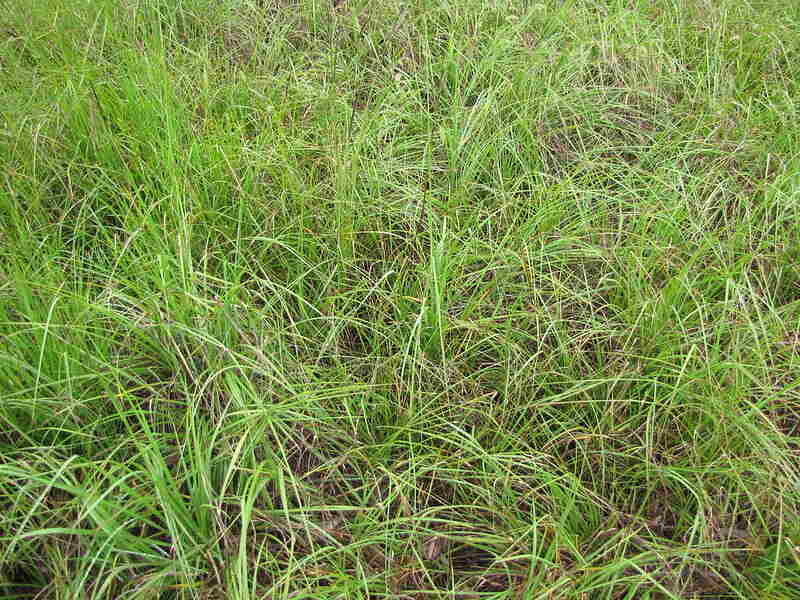
When it comes to watering your lawn, the same amount of water doesn’t apply to every grass type. Research how much water your grass variety typically needs in summer, and don’t deviate from that watering schedule.
Warm-season grasses love temperatures between 75 and 90 degrees Fahrenheit and grow the most in late spring, summer, and early fall. They require less watering than cool-season grasses but do best when watered deeply.
Under normal circumstances, your warm-season grass should receive between ½ inch and 1 inch of water per week. Adjust if necessary, and you’re experiencing an unusually hot summer.
Warm-season cultivars that can withstand drought are:
- Bermudagrass
- Bahiagrass
- Zoysiagrass
- Buffalograss
- St. Augustinegrass
Cool-season grasses are most active during the cooler parts of the year, benefitting from temperatures between 60 and 75 degrees Fahrenheit. Since they’re sensitive to drought and heat, cool-season grasses require more frequent watering to stay healthy.
Give your grass between 1 inch and 1 ½ inches per week. If this isn’t possible, most cool-season grasses will go dormant.
Some drought-resistant cool-season varieties include:
- Tall fescue
- Kentucky bluegrass
Your Sprinkler System
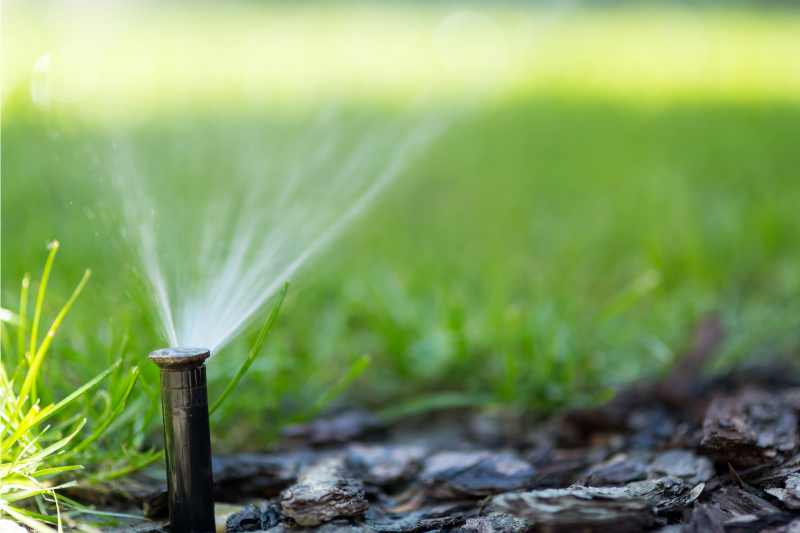
A properly working sprinkler system will deliver just the right amount of water to your lawn. Since grasses are more vulnerable during the hot summer months, it’s especially important to check the condition of your sprinklers and make any necessary adjustments before the temperatures become unbearable.
To make sure your sprinkler is working its best, check the following:
- The nozzles and heads are in excellent condition and distribute water evenly across the grass
- The water pressure is calibrated according to your lawn’s needs and soil type. Too much water can lead to waterlogging, while insufficient water can cause dry patches and dead spots. Personalize your approach to get the most out of your grass.
- Your sprinklers don’t have any leaks that may contribute to water waste and a surplus of water delivered to your lawn.
Your Local Watering Regulations
In the heat of summer, local watering restrictions can throw a wrench in your well-established lawn care routine. To conserve water, prevent water shortages, and keep things as eco-friendly as possible, municipal authorities may put in place the following measures:
- Watering frequency restrictions
- Time of day restrictions
- Watering duration restrictions
- Complete watering bans for a set period of time in extreme cases
- Required compliance with smart irrigation systems that use weather and soil conditions to determine the perfect amount of water your lawn needs. They can be programmed to turn on and off as needed to optimize water usage.
Common Lawn Watering Mistakes in Hot Weather
There can be two extremes when watering your lawn in the heat of summer – watering too much or too little. It’s important to get the right balance to keep it growing during a very stressful time. Let’s look at these watering extremes.
Underwatering Your Lawn

If your lawn is struggling to maintain its vitality and health in a heatwave, you will quickly see the signs it is not getting enough water. Here are some indicators your lawn is thirsty and struggling in the summer heat:
- Yellow, brown, or grey grass. Even though this symptom doesn’t always mean your grass isn’t sufficiently hydrated, most of the time, it’s a sign of underwatering.
- Footprints that remain on the grass long after someone walked on it. This is due to the grass being unable to spring back up as quickly.
- Dry, crispy texture to the grass.
- Slow growth or no growth, which can be temporary or permanent, depending on how long the grass was deprived of water.
How to Help an Underwatered Lawn Bounce Back
To bring an underwatered lawn back to life, follow these tips:
- Put together a proper lawn watering schedule, and deeply water your lawn for three or four consecutive days. Water it until it’s soaked and can’t absorb any more liquid to encourage root revival and strengthening.
- Spread a thin layer of mulch across your lawn to retain moisture, reduce water evaporation, and help the soil underneath regulate its temperature. Some excellent organic mulch options include grass clippings, leaves, bark, wood chips, hay, and straw.
- Depending on your soil type and condition, you may need to add organic fertilizer to improve soil structure and its ability to absorb and retain moisture.
- Don’t mow your lawn too short (also called scalping) to allow your soil some shade for moisture retention.
Overwatering Your Lawn
We get it. On a scorching hot day, drenching your lawn can seem like a good idea. But give your lawn more water than it needs, and you’re setting it up for failure. If your lawn is displaying any of the following symptoms, it might be time to cut back on your watering:
- Puddles on your lawn that persist long after you’ve finished watering your grass. When the soil isn’t absorbing water, it’s either compacted or overly saturated.
- Fungi and mushrooms in your grass – a clear sign of a damp environment and overwatering.
- Grass that feels squishy when you step on it.
- Slow growth or no growth, evidenced by sparse areas and bare patches on your lawn.
- Yellow grass, as a result of oxygen deprivation (which stems from overwatering).
- Weeds and pests in your grass. These nuisances thrive in damp conditions, and if you’re not careful, they can easily overrun your lawn.
- Thatch buildup, as a result of shallow roots that don’t burrow deep into the soil (also a result of overwatering). These roots decompose and stay on top of the lawn as thatch, smothering the grass and blocking its access to nutrients, air, and sunlight.
How to Help an Overwatered Lawn Bounce Back
Fortunately, your overwatered lawn can recover if you make proper lawn care adjustments. Take a shot at these strategies for restoring your lawn to its former glory:
- Reduce the frequency of your waterings, soak the soil when you irrigate, and allow the soil to dry between sessions to help the root system recover. Also, watch the weather closely to avoid combining irrigation with rainfall and choking your grass.
- Make sure your soil is well-draining to prevent waterlogged conditions in the future.
- Cut your grass according to its recommended height. Mowing taller will help the grass better protect the soil and retain necessary moisture.
- Overwatering causes soil compaction, which can be relieved with core aeration. This helps air, water, and nutrients correctly enter and circulate through the soil.
FAQ About Watering Your Lawn in Hot Weather
What’s the “Tuna Can Test”?
If you want to know how long to run your sprinkler system so your lawn is getting the right amount of water, take the “tuna can test.” Follow these steps:
- Step 1: Randomly place 8 or 9 shallow, flat-bottomed containers, such as empty tuna cans, around your lawn. Try to space them out as evenly as possible.
- Step 2: Turn on your sprinklers and set a timer for 30 minutes.
- Step 3: At the end of the 30 minutes, measure the water in each can with a ruler. Add the amounts together and divide the total by the number of cans on the lawn to find out how much water your sprinkler supplies in 30 minutes.
- Step 4: Adjust your watering time according to the results. If you found the average amount of water in each can was about half an inch, you’re good to water your lawn for 30 minutes each session. If the average was less than half an inch, you’ll need to leave the sprinklers on longer. If it was more, you’ll need to turn them off sooner.
Can a Soil Moisture Meter Help Me Water My Lawn Better?
When it comes to watering your lawn, the first step is to determine whether your soil actually needs any water. A soil moisture meter can make your life easier by telling you how moist (or dry) your soil is.
Insert the probe end as far into the soil as possible and check the display. Ideally, the reading should be situated in the blue “moist” zone. Outside of that, you may need to change how you water your grass to help it thrive long-term.
Does A Newly-Seeded Lawn Need More Water in Hot Weather?
For a newly seeded lawn, keep the top 1.5 inches of soil moist (not soggy) for between 5 and 10 days, which is how long the germination period lasts. If you have warm-season grass, you may have to water the new seeds for up to two or three weeks, depending on the type. Keep an eye on the weather: give your lawn extra moisture if it’s scorching hot outside or if it’s both hot and windy.
Water new grass seeds once or twice daily with a gentle spray or mist to prevent displacing the seeds and flooding your lawn. Use a light touch and stay consistent in watering until the grass becomes established. Afterward, you can transition to watering two to three times a week (the amount of water you deliver depends on whether your grass is warm-season or cool-season).
Pro Lawn Care Service is at Your Fingertips
We’ve covered everything you need to know about nailing down a proper summertime lawn watering routine. But life can get busy, and not everyone is cut out for constant DIY work. If you’re watering diligently but just don’t have time to mow, edge, or trim your lawn, contacting a local pro can be a great option.
As lawn care experts, they have what it takes to keep your lawn in excellent shape and answer questions along the way. Why not give your grass the tender, loving care it deserves while you kick back and relax at the pool?
Sources
- Gotcher, M., Taghvaeian, S., Quetone Moss, J. (2017). Smart Irrigation Technology: Controllers and Sensors. OSU Extension. https://extension.okstate.edu/fact-sheets/smart-irrigation-technology-controllers-and-sensors.html
- Slow the Flow – A program of the city of Spokane. https://static.spokanecity.org/documents/publicworks/water/tuna-can-test.pdf
Main Image Credit: PublicDomainPictures